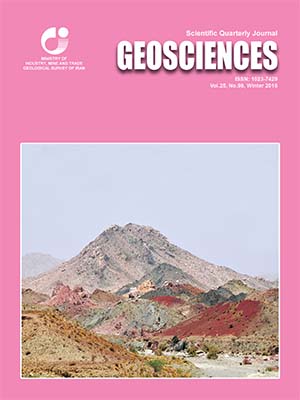Document Type : Original Research Paper
Authors
1 M.Sc., Department of Geology, Faculty of Science, Golestan University, Gorgan, Iran
2 M.Sc., Department of Geology, Faculty of Nature Sciences, Tabriz University, Tabriz, Iran
3 Assistant Professor, Department of Geology, Faculty of Natural Sciences, Tabriz University, Tabriz, Iran
4 Assistant Professor, Department of Geology, Faculty of Science and Earthquake Research Center, Shahid Bahonar University, Kerman, Iran
Abstract
In this study, the stress regime governing the Gorgan plain area (NE Iran) is calculated using inversion analysis based on earthquake focal mechanism solutions. In addition, a kinematic model is presented for hidden faults in this area. To gain this goal, the earthquakes occurred in this region and had available focal mechanism solutions were first selected for the inversion analysis. After applying the inverse analysis on the seismic data, the results indicate that there is a NW-SE (N42W)-trending tensional stress regime over the area. This is represented by the dominant local extensional structures such as shallow normal faults. Also the intermediate and minimum stress axes are close to horizontal direction, and indicate structures such as strike slip faults in the region. This is in agreement with most of the seismic dataset involved in the inversion analysis. By examining the previous studies and their results, more attempts were made to provide a kinematic model for this area. The Gharnaveh fault system comprises two sinistral faults (Marave-tappeh and Incheboroun), which are assumed to extend at eastern termination along an E-W direction under the Gorgan plain sediments up close to the Caspian Sea. Movement along these two faults under the sediments cause a clockwise rotation in the zone enclosed between them. Direction of this zone, which is affected by the faults, is consistent with the trend of regional seismicity. The proposed model can be used to account for many of the focal mechanism solutions of the earthquakes occurred, as well as the depth of the events. Most earthquakes occurred in this region are associated with the normal or left-lateral components. On the other hand, superficial structures such as mud volcanoes and fault-related folds (in the north of Aq qala) can be explained by this model, although lack of subsurface geophysical data in this area makes this model somehow speculative.
Keywords

